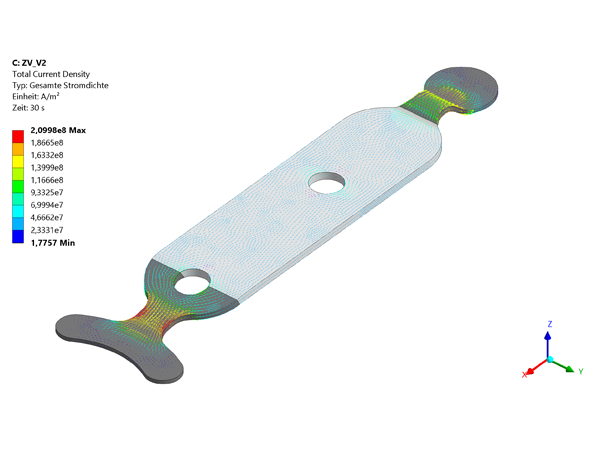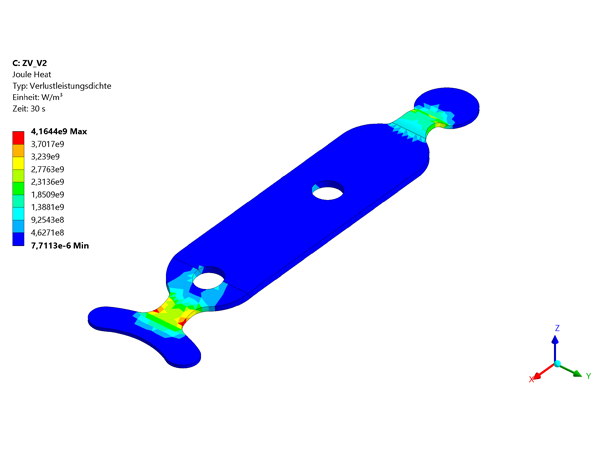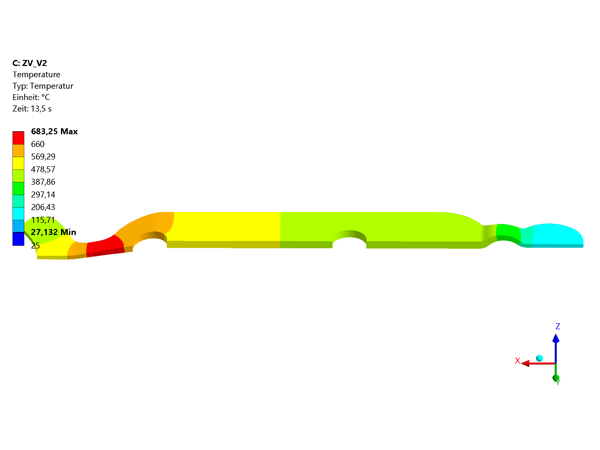Components through which electric current flows are subject to many requirements. As a rule, a combination of electrical and thermal conditions are at work, which ultimately also have mechanical relevance. Electrothermal simulations are therefore essential for evaluating these components in operation and effectively managing heat dissipation.
In the field of electrothermal simulation, our range of services covers the following areas.
In electrical simulation, a detailed analysis is carried out to evaluate the current carrying capacity and optimize the electrical current flow. To ensure a precise evaluation, stationary and transient conditions are taken into account.
In order to represent and optimize temperature fields, we carry out electrothermal simulations taking into account the combination of electrical and thermal boundary conditions. Depending on the application, stationary and transient conditions, such as specific current profiles (driving profiles), are taken into account.
These components can be exposed to natural and forced convection at the same time. Flow simulations (CFD) are used to take these fluid flow effects into account.
Mechanical simulations follow electrothermal and fluid mechanical simulations to evaluate the thermomechanical load.
The determination of the fatigue strength consists of comprehensive mechanical simulations to determine the service life of the system in the high cycle fatigue (HCF) or low cycle fatigue (LCF) range. Among other things, we take vibration loads, PSD analyses and thermal shocks into account.
We analyze the stresses that can occur during assembly processes, such as welding or handling in the manufacturing process, to ensure the structural integrity of the system.
Determination of thermal response times to optimize the use of sensor technology.
By varying geometric parameters, we perform comprehensive parameter studies to optimize the system design and achieve maximum performance.
The following programs are used for electrothermal simulation:
- ANSYS Workbench
- ANSYS mechanical APDL
- ANSYS Fluent
- Siemens Simcenter FLOEFD
Our electrothermal simulation thus offers a holistic evaluation and optimization of the system, taking into account electrical, thermal and mechanical aspects in order to maximize performance, reliability and service life.




